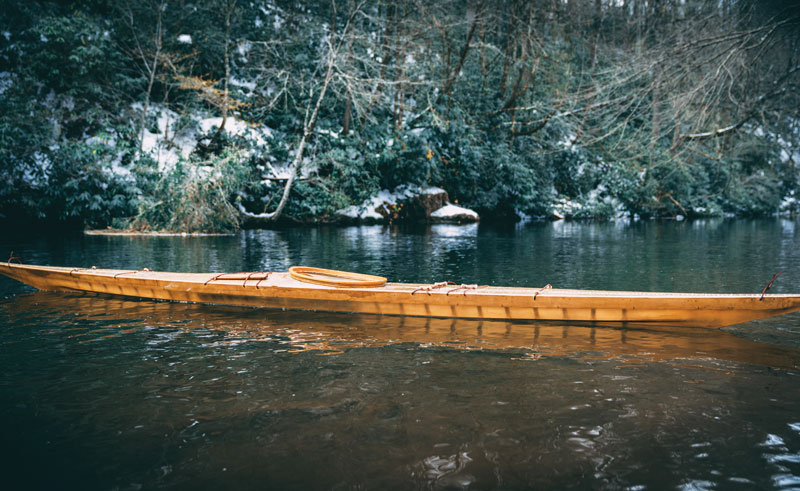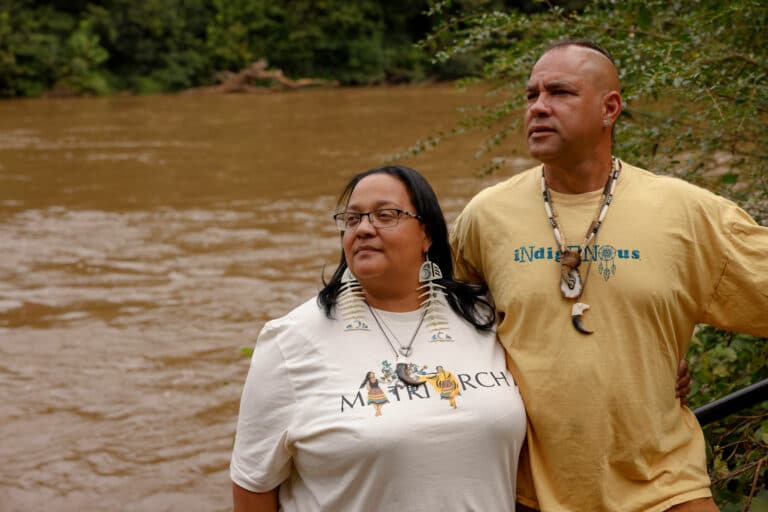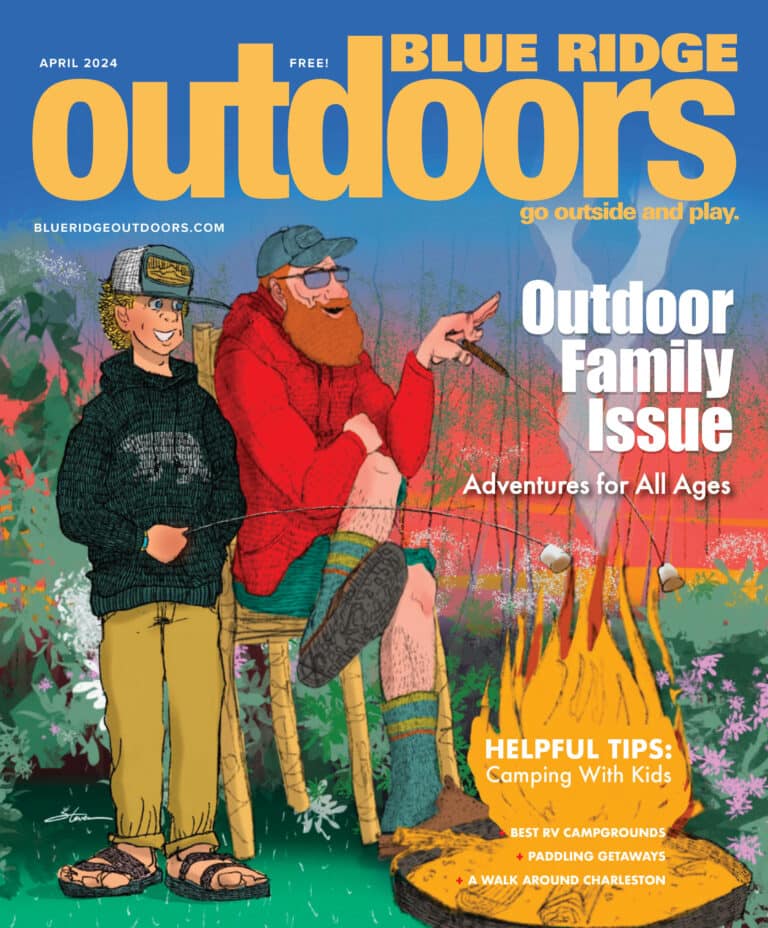North Carolina Outdoor Guide and Carpenter inspired by Inuit Craftsmanship
In 1950, the Canadian government forciblyremoved thousands of Inuit from their ancestral homeland. From this tragic epoch emerged the tale of one elder who refused to leave. Hoping to ensure their grandfather’s compliance, relatives confiscated the old man’s tools. Unfazed, he snuck out of the family igloo in a winter storm and defecated into his hands. He shaped his own feces into a knife and hardened it with snow and saliva. He then killed a dog and fashioned a sled out its ribcage. He harnessed the dead canine’s companions to the makeshift sled and stole away into the night.
The ingenuity of the Inuit has captured adventurous imaginations for centuries. From survival tales, to cold-weather gear, to rolling a kayak, northland indigenous culture has left an indelible mark on outdoor recreation—and especially on Brevard, North Carolina boat builder Chad Quinn.
Quinn, an impassioned flatwater paddler, had invested thousands of dollars in kayaks and carbon paddles. Plying the vast web of lakes in upstate South Carolina, he obsessed over how he could go farther, faster. He was gliding across Clarks Hill Lake one afternoon when a serendipitous meeting with an old man wielding a strange wooden paddle changed everything.
“It seemed like something that shouldn’t work because of its shape,” Quinn remembers of the paddle. Curious, he gave the slender, wooden implement a try. Light, flexible, and powerful, Quinn was immediately enamored with the paddle, even down to the organic feel of wood and tung oil on his palms.
“Not only did it work, it was really efficient,” he said.
Quinn convinced the man to build him such a paddle, but he wouldn’t share his shaping techniques, so Quinn launched himself into a life-changing exploration.
“When I realized how amazing the paddle was and how I didn’t want to use my carbon paddle anymore, I had no other choice than dive in with both feet into the kayaks,” Quinn says.
An amateur carpenter, Quinn was captivated by Inuit craftsmanship. He scoured the internet for information, piecing together instructional videos and old literature and attended conventions. Eventually he built a body of knowledge.
“The first one I did in my living room,” says Quinn. “I was building a barn at the time and in the evening I would come inside and work on this side project: building a kayak.”
From the start, Quinn has built the boats with exclusively indigenous techniques. He forgoes power tools in favor of simple hand tools, including wickedly sharp Japanese hand saws. He even makes cuts without a measuring tape, utilizing the Inuit technique of going off hand and arm lengths. This style of building gave Quinn’s journey deeper meaning.
“I began to feel like I had a responsibility to preserve and share this information.”
As an outdoor guide and kayaking outfitter, Quinn decided to supplement his business with his newfound boat building skills and began offering classes in which his clients built paddles and kayaks. He named his new company Bear Traditional Kayaks, which recognizes both the simplicity of the kayak and the significance of the bear in Inuit culture.
“It’s a fitting description of the kayak as something bold and strong,” Quinn says.
Craftsman Jim Furnace discovered Quinn’s Bear Kayak workshop in the back of Next Venture Sports in Brevard, North Carolina and was immediately drawn to Quinn’s use of hand tools.
“I was always in and out of the shop, and we struck up a conversation,” Furnace explains. “Chad worked me through it step by step. I enjoyed the lashing part; it’s built with the old fashion lashings and pegs, no hardware.”
Upon finishing, Furnace quickly began planning his next boat, a phenomenon Quinn says he sees often.
“It’s fun using old-time hand tools,” says Furnace. “You build the boat out of cedar and bamboo. Steaming and bending wood, I really enjoyed that. I almost didn’t want to skin the boat. I just wanted to look at it. It’s like a piece of art.”
Paddling one of Quinn’s kayaks is an equally memorable experience. When Michael Ferraro, a professional whitewater paddler who took sixth this year at the Green Race, sessioned one of Quinn’s boats, he was immediately impressed.
“Compared to what I’m used to in a whitewater kayak, the Greenland boats are much longer and narrower, making them glide through the water much faster. It was a unique experience.”
The thin yet durable exterior fosters intimacy with the natural elements. Paddlers tune into the temperature and currents easily, anticipate their maneuvers quickly, and fall into a deep rhythm when gliding across the water.
Moreover, the boats are stealthy. Quinn says he sees exponentially more wildlife in Greenland boats.
While his kayaks are both a work of art and a high-performance, expedition-ready watercraft, Quinn sees something even deeper in them: family. He often finds his boats become precious family heirlooms, which is fitting as these kayaks were a vital part of every Inuit family. The boat’s ability on the water owes itself to this enormous responsibility of providing one’s family with meat.
These people had to hunt in dangerous waters in order to secure sustenance, Quinn says.
“What drove people to get into these boats was survival, proven success, and love.”








